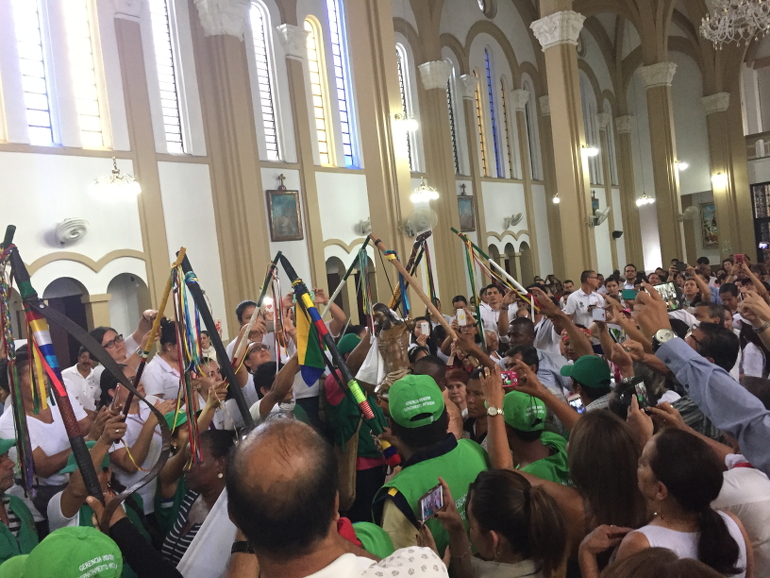Bombed-out Christ statue evinces pain of Colombian conflict
A symbolic four-day pilgrimage came to a close Thursday evening in anticipation of the pope’s arrival here Friday. The Cristo de Bojayá, a statue of Christ that survived one of Colombia's worst massacres, arrived in Villavicencio’s cathedral.
Sep 09, 2017

By Soli Salgado
A symbolic four-day pilgrimage came to a close Thursday evening in anticipation of the pope’s arrival here Friday. The Cristo de Bojayá, a statue of Christ that survived one of Colombia's worst massacres, arrived in Villavicencio’s cathedral.
Pope Francis will bless the figure Friday and it will be placed on a cross that will be present during the pope’s meeting with victims of the country's 50-year civil war, in which an estimated 220,000 were killed in fighting among the Columbian government and different rebel forces.
Bojoyá witnessed one of the bloodiest moments of that conflict, where on May 2, 2002, a bomb launched by the Revolutionary Armed Forces of Colombia (FARC) during a battle with the paramilitary United Self-Defense Forces of Colombia (AUC) fell in the church where many had sought refuge from the crossfire.
The Colombian Center for Historical Memory estimates that 119 were killed in the blast, with dozens left injured.
The Christ figure began its journey in the village of Bojoyá, and went through Quibdó and Bogotá before reaching Villavicencio.
"This image of Christ helps us trust in the protection of Jesus, because he lived the violence that our people suffered," said one of the women who moved the figure along the Atrato River by canoe, to Quibdó and then to Villavicencio.
Roman Catholic villagers and priests rescued the "mutilated Christ," which lost its legs and arms in the blast, and kept it for several years until it could be restored.
The figure was placed in a position of honor in the Cathedral of Our Lady of Carmen de Villavicencio, where devotees made a brief and emotional tribute. There were roughly 200 people in attendance.
One woman who was part of the Afro-descendent choir that paid homage to the statue, Eleiza Mosquera, arrived with it at dawn. She told reporters that Francis blessing the statue is a sign of hope and reconciliation.
"We ask the pope that with his coming to us, Colombians, that there is social inclusion, that the voice of women be taken into account, the voice of these women who have been fighting, who have been battered by war — not just in the municipality of Bojayá, but in Colombia as a whole — and that they collect the fruits that we have been making visible, and that the voice of the ancestral culture is heard,” she said. --NCR







Total Comments:0